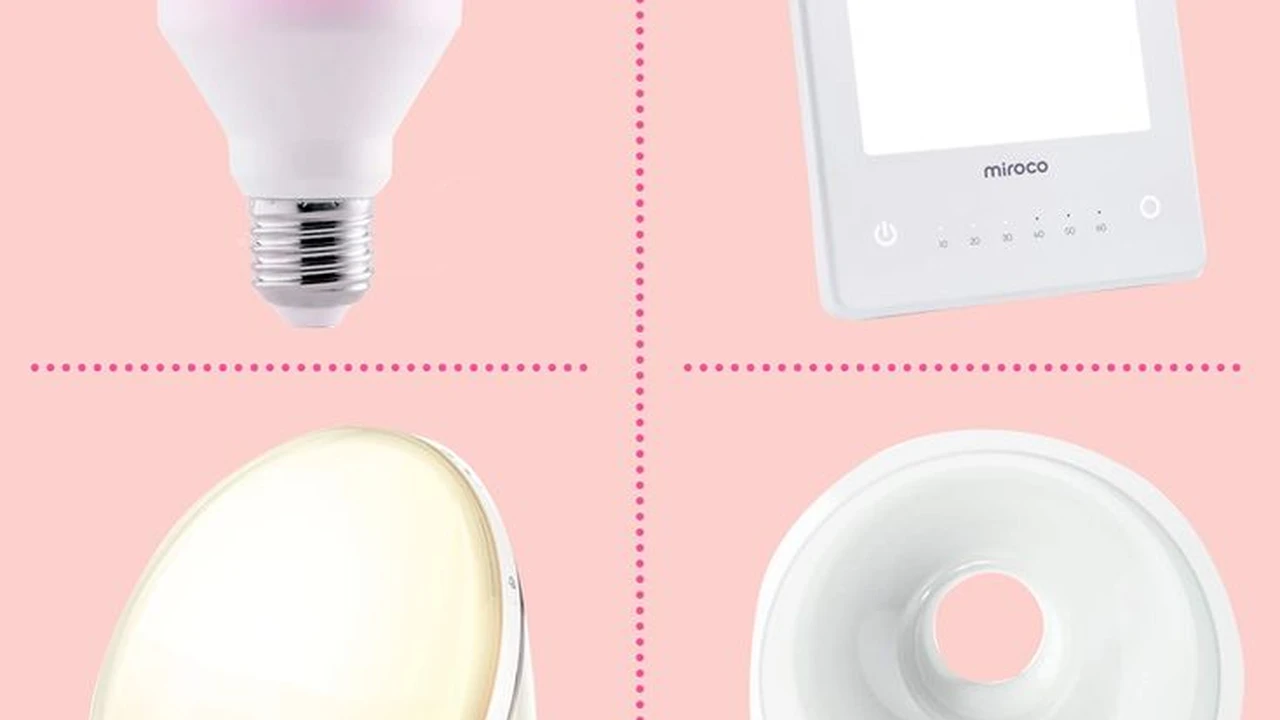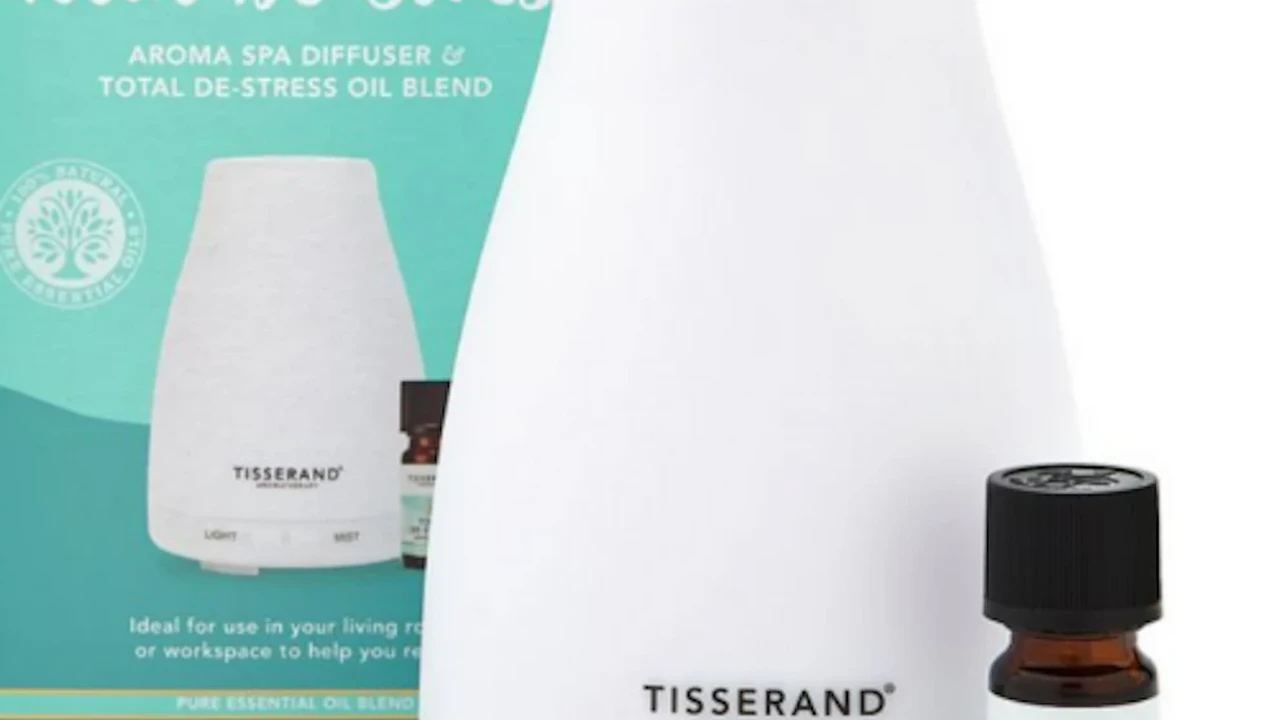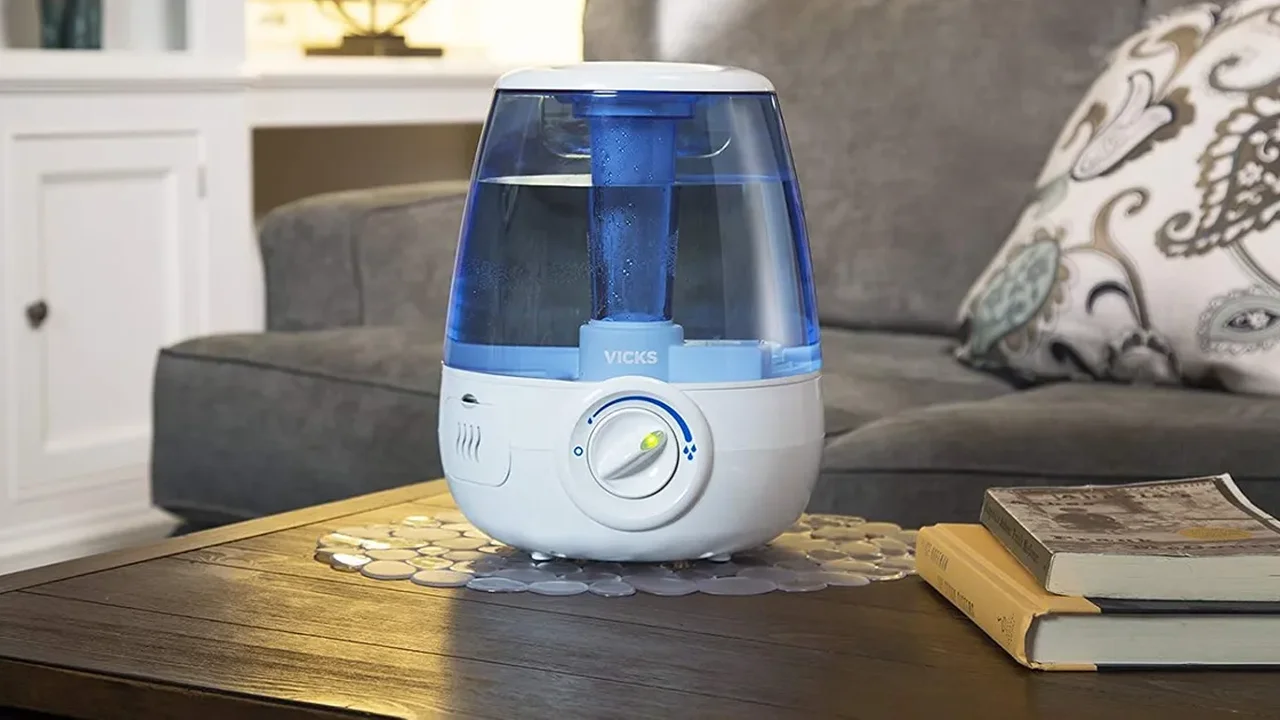Comparing Light Therapy Lamps for Winter Blues
Find relief from winter blues by comparing the best light therapy lamps. Boost your mood and energy during darker months.

Comparing Light Therapy Lamps for Winter Blues
As the days grow shorter and the sunlight becomes a distant memory, many of us find ourselves grappling with a dip in mood, energy, and overall well-being. This phenomenon, often referred to as the 'winter blues' or more clinically, Seasonal Affective Disorder (SAD), affects millions globally. While a cozy blanket and a warm drink might offer temporary comfort, a more effective and scientifically backed solution lies in light therapy. But with a plethora of light therapy lamps on the market, how do you choose the right one? This comprehensive guide will compare the best light therapy lamps, helping you navigate the options and find your personal sunshine.
Understanding Seasonal Affective Disorder and Light Therapy Benefits
Before diving into product comparisons, let's briefly touch upon what SAD is and how light therapy works. SAD is a type of depression that occurs at the same time every year, typically starting in the fall and continuing into the winter months. It's believed to be linked to a lack of sunlight, which can disrupt your body's internal clock (circadian rhythm), reduce serotonin levels (a mood-regulating neurotransmitter), and affect melatonin production (a sleep-regulating hormone).
Light therapy, also known as phototherapy, involves exposure to a bright light source that mimics natural outdoor light. This exposure can help reset your circadian rhythm, boost serotonin, and regulate melatonin, thereby alleviating SAD symptoms. The key benefits include improved mood, increased energy levels, better sleep quality, and enhanced focus.
Key Features to Consider When Choosing a Light Therapy Lamp for SAD Relief
Not all light therapy lamps are created equal. To ensure you're getting an effective and safe device, consider these crucial features:
Light Intensity and Brightness for Effective Treatment
The most critical factor is light intensity, measured in lux. For effective SAD treatment, a lamp should deliver at least 10,000 lux at a comfortable distance. This is the standard recommendation from the American Psychiatric Association. Be wary of lamps that don't specify their lux output or require you to sit uncomfortably close to achieve the recommended intensity.
UV Filtering and Eye Safety Considerations
While sunlight contains UV rays, a good light therapy lamp should filter out almost all UV light to protect your eyes and skin. Always look for lamps that explicitly state they are UV-filtered. This is paramount for long-term safety and comfort during daily use.
Color Temperature and Light Spectrum for Mood Enhancement
Most effective light therapy lamps emit a broad-spectrum white light, often around 5,000K to 6,500K, which mimics natural daylight. Some lamps offer adjustable color temperatures, allowing you to customize the light to your preference. While blue light has been shown to be effective for circadian rhythm regulation, excessive blue light exposure, especially in the evening, can disrupt sleep. Broad-spectrum white light is generally recommended for SAD treatment.
Size Portability and Design for Home and Office Use
Consider where you'll be using the lamp. Do you need a compact, portable device for travel or office use, or a larger, more stationary lamp for your home? Design also plays a role; some lamps are sleek and modern, blending seamlessly into your decor, while others are more utilitarian. Think about how it will fit into your daily routine.
Timer Settings and Customization Options for Personalized Therapy
Many lamps come with built-in timers, allowing you to set your therapy sessions for a specific duration (e.g., 20-30 minutes). Some offer adjustable brightness levels, allowing you to gradually increase or decrease intensity. These customization options can enhance your therapy experience and make it more convenient.
Top Light Therapy Lamp Brands and Models Compared
Now, let's dive into some of the most popular and highly-rated light therapy lamps on the market, comparing their features, pros, cons, and ideal use cases.
1. Carex Day-Light Classic Plus Bright Light Therapy Lamp
The Carex Day-Light Classic Plus is a long-standing favorite in the light therapy community, often recommended by healthcare professionals. It's a robust, full-spectrum lamp designed for serious SAD treatment.
- Key Features: Delivers 10,000 lux at 12 inches, offers two light settings (therapy and task lighting), adjustable height and angle, UV-filtered.
- Pros: Clinically proven effectiveness, large light surface for wider coverage, sturdy build, versatile for therapy and general illumination.
- Cons: Larger footprint, less portable, higher price point.
- Ideal Use: Home use, dedicated therapy sessions, individuals seeking a powerful and reliable SAD lamp.
- Price: Approximately $150 - $200 USD.
- User Scenario: Sarah, who experiences severe winter blues, places her Carex Day-Light Classic Plus on her desk each morning while she works. The large, bright light helps her feel more awake and less sluggish, making her more productive and improving her mood throughout the day.
2. Philips SmartSleep Connected Sleep and Wake-Up Light
While primarily a wake-up light, the Philips SmartSleep also offers light therapy features, making it a versatile option for those looking to improve both sleep and mood.
- Key Features: Simulates sunrise and sunset, offers 10,000 lux light therapy, personalized sleep and wake-up programs via app, guided breathing exercises, FM radio, speaker.
- Pros: Multi-functional, aesthetically pleasing design, smart features for sleep tracking and coaching, effective for both SAD and sleep regulation.
- Cons: Higher price, light therapy is integrated with wake-up functions, which might not suit everyone's therapy schedule.
- Ideal Use: Individuals looking for a comprehensive sleep and mood solution, those who appreciate smart home integration.
- Price: Approximately $200 - $250 USD.
- User Scenario: David struggles with waking up in the dark winter mornings. His Philips SmartSleep gradually brightens his room before his alarm, mimicking a natural sunrise. He also uses its light therapy function for 30 minutes while having breakfast, which helps him feel more energized and less prone to afternoon slumps.
3. Verilux HappyLight Full-Size Light Therapy Lamp
Verilux is another well-known brand in the light therapy space, and their HappyLight series offers a range of options, with the Full-Size model being a popular choice for its balance of performance and value.
- Key Features: Delivers 10,000 lux at 6 inches, compact and portable design, UV-filtered, flicker-free, easy-to-use one-button operation.
- Pros: Affordable, good lux output for its size, highly portable, simple to operate, good for travel or small spaces.
- Cons: Requires closer proximity for 10,000 lux, smaller light surface compared to larger models.
- Ideal Use: Budget-conscious users, those needing a portable solution for office or travel, first-time light therapy users.
- Price: Approximately $70 - $100 USD.
- User Scenario: Emily, a college student, finds her mood dips during exam season in winter. She uses her compact Verilux HappyLight on her dorm desk while studying. Its portability allows her to easily move it between her desk and bedside table, ensuring she gets her daily dose of light therapy wherever she is.
4. Northern Light Technologies Boxelite Light Therapy Box
The Boxelite is a powerful and durable light therapy box, often favored by those seeking a no-frills, high-performance device. It's known for its consistent and bright light output.
- Key Features: Delivers 10,000 lux at 14 inches, large light surface, robust construction, 5-year warranty.
- Pros: Very effective, durable and long-lasting, wide light dispersion, excellent for consistent daily use.
- Cons: Bulky design, not very portable, higher price point.
- Ideal Use: Dedicated home use, individuals with severe SAD, those prioritizing durability and consistent performance.
- Price: Approximately $200 - $250 USD.
- User Scenario: Mark, who works from home, has a dedicated corner for his light therapy sessions. He uses his Northern Light Technologies Boxelite for 45 minutes every morning while reading the news. The powerful and consistent light helps him maintain a stable mood and energy level throughout the long winter months.
5. Circadian Optics Light Therapy Lamp Lumos 2.0
Circadian Optics offers stylish and compact light therapy lamps that blend well into modern aesthetics. The Lumos 2.0 is a popular choice for its design and effectiveness.
- Key Features: Delivers 10,000 lux at 6 inches, three brightness levels, sleek and minimalist design, foldable stand for portability, UV-free.
- Pros: Aesthetically pleasing, very compact and portable, adjustable brightness, good for small spaces.
- Cons: Requires closer proximity for full lux, smaller light surface.
- Ideal Use: Individuals who prioritize design and portability, office use, travel, those with limited space.
- Price: Approximately $60 - $90 USD.
- User Scenario: Jessica, a graphic designer, wants a light therapy lamp that doesn't look out of place in her minimalist apartment. Her Circadian Optics Lumos 2.0 sits discreetly on her bedside table. She uses it for 20 minutes while enjoying her morning coffee, appreciating its sleek design and how it subtly boosts her mood.
Comparing Features and Value Across Different Price Points
When making your decision, it's helpful to consider the trade-offs between price, features, and performance. Generally, higher-priced lamps offer more robust construction, larger light surfaces, and potentially more advanced features like app connectivity or integrated sleep programs. More affordable options tend to be more compact and portable, but might require you to sit closer to achieve the recommended lux.
Budget-Friendly Options for Seasonal Wellness
If you're on a tighter budget, the Verilux HappyLight Full-Size or the Circadian Optics Lumos 2.0 are excellent starting points. They provide the essential 10,000 lux output and UV filtering at a more accessible price. They are great for testing the waters of light therapy without a significant investment.
Mid-Range Light Therapy Solutions for Enhanced Features
In the mid-range, you'll find lamps like the Carex Day-Light Classic Plus. These offer a good balance of performance, durability, and features. They are often larger, providing a wider field of light, and are built to last, making them a solid investment for consistent daily use.
Premium Light Therapy Devices for Comprehensive Biohacking
At the higher end, devices like the Philips SmartSleep Connected Sleep and Wake-Up Light and the Northern Light Technologies Boxelite offer premium features. The Philips unit integrates light therapy with advanced sleep tracking and wake-up functions, appealing to those interested in comprehensive sleep biohacking. The Boxelite, while less feature-rich, provides unparalleled light intensity and durability for serious SAD management.
Practical Tips for Maximizing Your Light Therapy Sessions
Once you've chosen your light therapy lamp, here are some practical tips to ensure you get the most out of your sessions:
Optimal Timing and Duration for Daily Use
Most experts recommend using your light therapy lamp first thing in the morning, ideally within an hour of waking up. This helps reset your circadian rhythm for the day. A typical session lasts 20-30 minutes at 10,000 lux. If your lamp has a lower lux output, you might need longer sessions or to sit closer.
Proper Placement and Distance for Effective Light Exposure
Place the lamp at an angle to your side, not directly in front of you, to avoid glare. You don't need to stare directly into the light; you can read, eat, or work while the lamp is on. Refer to your lamp's manual for the recommended distance to achieve 10,000 lux.
Integrating Light Therapy into Your Morning Routine
Consistency is key. Make light therapy a non-negotiable part of your morning routine. Place the lamp where you usually have breakfast, read the news, or do your morning emails. This makes it easier to stick to your therapy schedule.
Monitoring Progress and Adjusting as Needed
Pay attention to how you feel. You might start noticing improvements within a few days or weeks. If you're not seeing results, try increasing the duration of your sessions, sitting closer to the lamp, or consulting with a healthcare professional. Keep a mood journal to track your progress.
Potential Side Effects and When to Consult a Professional
Light therapy is generally safe and well-tolerated, but some individuals might experience mild side effects, especially when starting. These can include eye strain, headaches, nausea, or agitation. These usually subside within a few days as your body adjusts. If side effects persist or are severe, reduce your session time or distance from the lamp.
It's always a good idea to consult with a healthcare professional before starting light therapy, especially if you have a pre-existing eye condition (like glaucoma or cataracts), bipolar disorder (as light therapy can trigger manic episodes in some individuals), or are taking medications that increase light sensitivity (e.g., certain antidepressants or antibiotics). They can help determine if light therapy is right for you and recommend the optimal treatment plan.
Embracing the Light for a Brighter Winter
Choosing the right light therapy lamp can be a game-changer for combating the winter blues and managing SAD. By understanding the key features, comparing popular models, and implementing practical usage tips, you can effectively bring the benefits of natural light into your home, even on the darkest days. Remember, consistency and proper usage are crucial for success. So, go ahead, find your perfect light, and illuminate your path to a brighter, more energetic winter season.
:max_bytes(150000):strip_icc()/277019-baked-pork-chops-with-cream-of-mushroom-soup-DDMFS-beauty-4x3-BG-7505-5762b731cf30447d9cbbbbbf387beafa.jpg)





